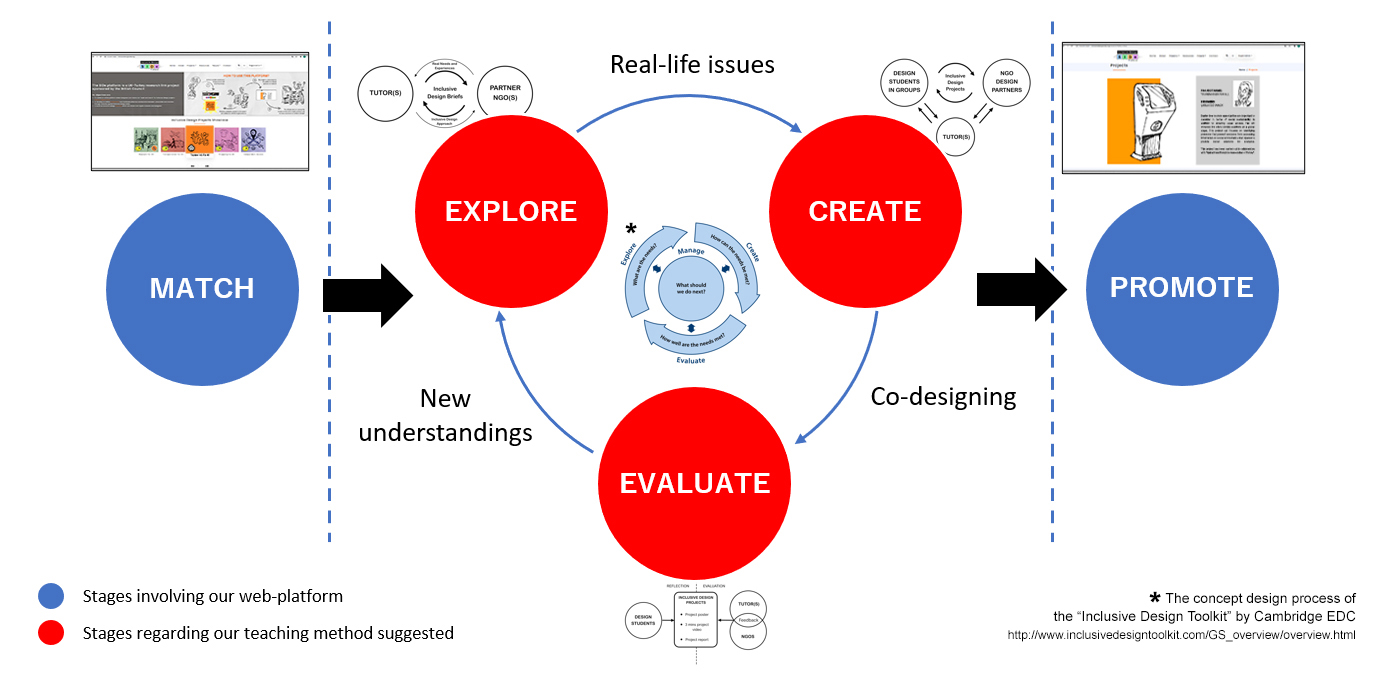Design is a powerful tool that can enable the elimination of many accessibility problems encountered on a large scale in our daily lives, from products to architectural structures and environmental arrangements, and to ensure social integration for all. On the other hand, poor designs cause accessibility problems and consequently barriers in the society.
On this page, we have prepared a guide "FOR NGOs" regarding the inclusive design studies to be carried out in collaboration with the University-NGO, and in accordance with the way our platform works. In this guide, NGOs working on accessibility problems can find the model we propose to increase the efficiency of the collaborations they will establish with universities to find solutions to these problems, the stages of the process and the guiding explanations about these stages. This guide is intended for NGOs, and separate documents have been prepared for universities and students who will be involved in the process, detailing the model from the educational perspective.
DOWNLOAD OUR GUIDANCE FOR NGOs
In summary, our model covers identifying "design briefs" that focus on real-life needs in NGO-University cooperation giving these design briefs to students as a task in their related course(s), and students’ cooperation with voluntary members from the relevant NGO throughout their design process. The cooperation process we propose adopts an “inclusive design” approach. Introductory information about the inclusive design is also included in our guide.
Our web-platform, which is an important component of our model that consists of 5 stages, provides the visibility of the developed student projects and the collaboration carried out with NGOs in the field of social responsibility. To develop this model, we adopted the concept design process developed by Cambridge EDC in their “Inclusive Design Toolkit”.

The stages of our collaboration approach are summarised below. You can find more detailed information and recommendations regarding its use in the design education, in the guidance document.